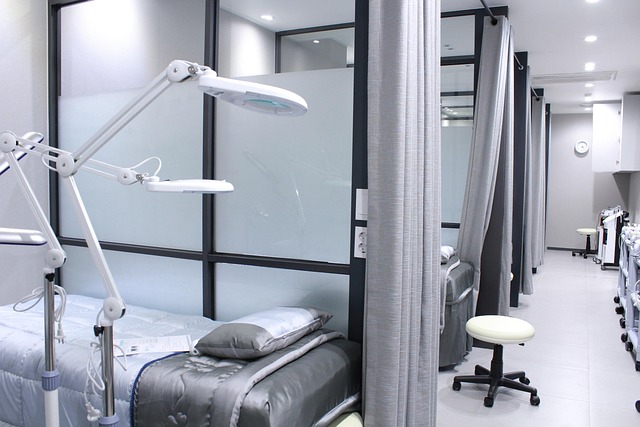Leeds Skin Tag Removal requires understanding their causes and types. Safe at-home methods include acid creams and tying thread. Professional options include cryosurgery, surgical excision, and laser treatments. Myth-busting: skin tags aren't cancerous. Consult a dermatologist for accurate removal and post-care advice to prevent future growths.
Looking for effective Leeds Skin Tag Removal methods? This comprehensive guide explores best practices for addressing skin tags safely. We delve into the causes, types, and various removal techniques, from at-home remedies to professional options. Learn about important precautions, debunk common misconceptions, and discover post-removal care tips to prevent recurrence. By following these expert recommendations, you can bid farewell to unsightly skin tags once and for all.
- Understanding Skin Tags: Causes and Types
- Safe Removal Methods at Home
- Professional Skin Tag Removal Options
- Precautions and Common Misconceptions
- Effective Post-Removal Care and Prevention
Understanding Skin Tags: Causes and Types

Skin tags, also known as acrochordons, are small, soft bumps that grow on the skin, often appearing as a tag or string hanging from a larger area. They are generally harmless but can be unsightly and sometimes cause discomfort. Understanding their causes is essential for anyone seeking effective Leeds Skin Tag Removal methods.
Skin tags primarily develop due to friction or irritation of the skin. They are most commonly found in areas where clothing rubs against the body, such as the neck, armpits, groin, and ankles. There are various types, including acral and angular tags, with different characteristics based on their location and appearance. Knowing these variations can help individuals identify them accurately and take appropriate action to remove them safely.
Safe Removal Methods at Home

When considering Leeds skin tag removal, it’s important to understand that there are several safe methods you can try at home. One popular option is using over-the-counter creams or solutions specifically designed for removing skin tags. These products often contain chemicals like salicylic acid or lactic acid, which help to dissolve the skin tag over time. Always follow the instructions carefully and be patient, as results may take several weeks to become apparent.
Another home remedy involves tying a small piece of thread or dental floss around the base of the skin tag. This method simulates the effects of constriction, cutting off the blood supply to the tag, which will cause it to fall off eventually. However, this process can be slow and may lead to discomfort or minor bleeding, so it’s crucial to exercise caution and cleanliness throughout.
Professional Skin Tag Removal Options

In Leeds, individuals seeking professional skin tag removal have several safe and effective options available. One popular method is cryosurgery, where liquid nitrogen is used to freeze and destroy skin tags. This non-invasive procedure is typically quick and well-tolerated, with minimal downtime. Another option is surgical excision, which involves a doctor cutting out the skin tag and stitching the skin closed. This method offers a permanent solution but may leave a small scar.
Laser treatments are also becoming increasingly popular for Leeds Skin Tag Removal. Pulsed-dye laser technology targets the blood vessels within the skin tag, causing it to disappear over time. This approach is generally painless and suitable for most skin types. It’s advisable to consult with a dermatologist or certified skin care specialist in Leeds to determine which professional removal option best suits individual needs and preferences.
Precautions and Common Misconceptions

When considering Leeds Skin Tag Removal, it’s crucial to understand common misconceptions and take necessary precautions. One prevalent misconception is that skin tags are cancerous or precancerous, which is generally not true. They are usually harmless benign growths. However, seeking professional advice before removing them is essential for safety and confirmation of their nature.
Another precaution to keep in mind is that DIY removal methods, while tempting due to their accessibility, can lead to infections, scarring, or pain if not done correctly. Professional services like those offered by experienced dermatologists are preferred as they employ sterile techniques and have the expertise to handle any potential complications, ensuring a safer and more effective Leeds Skin Tag Removal process.
Effective Post-Removal Care and Prevention

After successfully removing skin tags using safe methods, proper post-care is essential for optimal healing and to prevent future growths. Firstly, keep the treated area clean by gently washing it with mild soap and water. Avoid using harsh products or scratching the skin which can introduce infections. Pat the area dry softly and consider applying a thin layer of unscented moisturizer to aid in the healing process.
To prevent reoccurrence, maintain good hygiene practices and be mindful of any new growths. Skin tags often form due to friction or skin irritation; reducing these factors can help minimize their appearance. In Leeds, professional skin tag removal services utilize advanced techniques for effective and safe removals. Always consult with a qualified professional who can offer tailored advice based on your specific needs.
When considering Leeds Skin Tag Removal, understanding the safe practices for removal is key. From at-home remedies to professional services, each method has its merits. Remember to prioritize hygiene, consult a dermatological expert when needed, and follow proper post-removal care for optimal results. By adhering to these best practices, you can bid farewell to unsightly skin tags while maintaining healthy, radiant skin.
